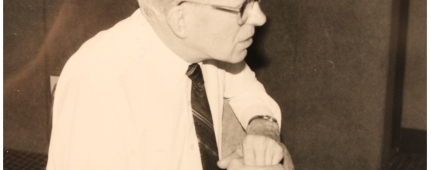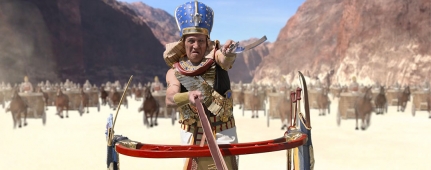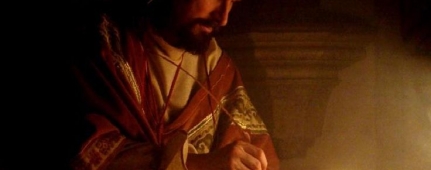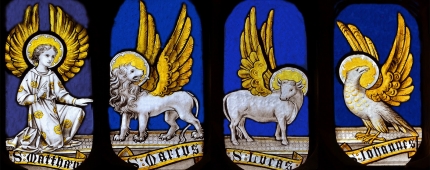1 Samuel 28:7ff—How could God allow the Witch of Endor to raise Samuel from the dead when God condemned witchcraft?
Problem: The Bible severely condemns witchcraft and communication with the dead (Ex. 22:18; Lev. 20:6, 27; Deut. 18:9–12; Isa. 8:19). In the OT those who practiced it were to receive capital punishment. King Saul knew this and even put all witches out of the land (1 Sam. 28:3). Nevertheless, in disobedience to God, he went to the witch of Endor for her to contact the dead prophet Samuel (1 Sam. 28:8ff). The problem here is that she appears to be successful in contacting Samuel, which lends validity to the powers of witchcraft which the Bible so severely condemns.
Solution: Several possible solutions have been offered to this episode at Endor. Three will be summarized here.
First, some believe that the witch worked a miracle by demonic powers and actually brought Samuel back from the dead. In support of this they cite passages which indicate that demons have the power to perform miracles (Matt. 7:22; 2 Cor. 11:14; 2 Thes. 2:9–10; Rev. 16:14). The objections to this view include the fact that death is final (Heb. 9:27), the dead cannot return (2 Sam. 12:23) because there is a great gulf fixed by God (Luke 16:24–27), and demons cannot usurp God’s authority over life and death (Job 1:10–12).
Second, others have suggested that the witch did not really bring up Samuel from the dead, but simply faked doing so. They support this by reference to demons who deceive people who try to contact the dead (Lev. 19:31; Deut. 18:11; 1 Chron. 10:13) and by the contention that demons sometimes utter what is true (cf. Acts 16:17). The objections to this view include the fact that the passage seems to say Samuel did return from the dead, that he provided a prophecy from Samuel that actually came to pass, and that it is unlikely that demons would have uttered truth of God, since the devil is the father of lies (John 8:44).
A third view is that the witch did not bring up Samuel from the dead, but God Himself intervened in the witch’s tent to rebuke Saul for his sin. In support of this view is the following: (a) Samuel seemed to actually return from the dead (v. 14), but (b) neither humans nor demons have the power to bring people back from the dead (Luke 16:24–27; Heb. 9:27). (c) The witch herself seemed to be surprised by the appearance of Samuel from the dead (v. 12). (d) There is a direct condemnation of witchcraft in this passage (v. 9), and thus it is highly unlikely that it would give credence to witchcraft by claiming that witches can actually bring people back from the dead. (e) God sometimes speaks in unsuspecting places through unusual means (cf. Baalam’s donkey, Num. 22). (f) The miracle was not performed through the witch, but in spite of her. (g) Samuel seems to really appear from the dead, rebukes Saul, and utters a true prophecy (v. 19). (h) God explicitly and repeatedly condemned contacting the dead (see above) and would not contradict this by giving credence to witchcraft. The major objections to this view are that the text does not explicitly say that God performed the miracle, and that a witch’s tent is a strange place to perform this miracle.
1 Samuel 31—The report of Saul’s death in this passage contradicts that given in the next chapter (2 Sam. 1)
Problem: First Samuel 31 says that King Saul committed suicide by falling on his sword, but 2 Samuel 1 records that he was killed by an Amalekite as he was about to lean on his sword.
Solution: Some claim that both stories are true, taking the Amalekite’s story as supplementary. They claim that Saul attempted suicide, but was not dead when the Amalekite arrived and finished the job. They point to the fact that the Amalekite had Saul’s sword and bracelet as evidence that his account was true, as well as the fact that David punished him by death for killing the king. The objections to this view are that it contradicts the statements of 1 Samuel 31, that “Saul took a sword and fell on it” and that his armorbearer “saw that Saul was dead” (vv. 4–5), as well as the inspired record that says “so Saul ... died” (v. 6).
Others see the 1 Samuel story as the correct version and the one in 2 Samuel 1 as a true record of the fabrication of the Amalekite who came upon Saul after he died and thought he could gain favor with David by taking credit for the feat. They point to the fact that the story contradicts the record in 1 Samuel 31, that the Amalekite did not seem to know that Saul died by a sword, not a spear, and that 1 Chronicles 10 repeats the story as recorded in 1 Samuel, but not the fabrication of the Amalekite. The main objections to this view are that 2 Samuel does not say his story is a lie, and that David killed him for his act. In response, he may have been killed on the basis of his self-confession (2 Sam. 1:16). And the fact that his story was in contradiction to that in 1 Samuel may have been taken as sufficient evidence that his story was a fabrication.
See All Problems
This excerpt is from When Critics Ask: A Popular Handbook on Bible Difficulties (Wheaton, Ill.: Victor Books, 1992). © 2014 Norman Geisler and Thomas Howe. All rights reserved. Used by permission. Click here to purchase this book.














